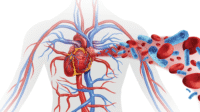Key takeaways
|
As healthcare professionals, nurses focus on preventing disease and reducing the risk of exacerbation in patients with chronic disease, which decreases the rate of hospital readmissions. To ensure success, our work should begin at the community level with intervention, education, and support. This article describes a program implemented by a critical access hospital (CAH) in rural West Virginia to address that community’s increasing rate of diabetes.
According to the 2014 National Diabetes Statistics Report, 29.1 million people in the United States have diabetes, and approximately 86 million adults have prediabetes. In rural areas, the risks are even higher, with the added insult of restricted access to care.
A community health needs assessment conducted in January 2016 by our CAH confirmed the grim statistics of unhealthy lifestyles and poor health in our region. West Virginia leads the nation with the highest rates of cardiovascular disease, obesity, and smoking. And it’s second in the nation in prevalence of diabetes, hypertension, and fair or poor health.
How we began
West Virginia received a community transformation grant from the Centers for Disease Control and Prevention (CDC) and called it Change the Future WV. One of its initiatives was implementing a Group Lifestyle Balance (GLB) program, part of the CDC-led National Diabetes Prevention Program that is taught nationwide. One member of our CAH team trained for the GLB program at the Diabetes Prevention Support Center of the University of Pittsburgh and additional staff were trained by master GLB trainers. Two of these staff members went on to become master trainers themselves.
In February 2016, we received CDC recognition for our evidence-based type 2 diabetes GLB program, which uses an approved curriculum and meets all of the performance criteria of the CDC’s Diabetes Prevention Recognition Program. (See Eligibility requirements.)
How the program works
The GLB program focuses on helping participants achieve a 7% weight loss and increase their activity levels to at least 150 minutes per week. The overall goal is to instill healthy lifestyle habits that reduce diabetes risk.
Participants can enroll in the program on their own or through a referral from their primary care provider (PCP). If they enroll their own, the GLB coach obtains a records release from the participant and contacts his or her PCP for recent lab results related to the targeted outcomes. The GLB coach provides the PCP with progress and completion notes to aid in continuity of care and to help build the PCP’s confidence in the program. This level of collaboration leads to continued referrals to the GLB program.
After signing up for the program, participants complete a CDC prediabetes screening test, readiness assessment, and a form to assess their physical capability. For 16 weeks, participants meet once a week in small groups with a GLB coach, then attend monthly follow-up sessions for 6 months.
At each weekly meeting, participants are weighed privately. The coach teaches participants how to incorporate healthy eating habits, reduce stress, increase physical activity, and use coping skills in their daily lives. In addition to coaching support, participants receive written educational materials on a health-related topic to add to their binder of class materials, a pedometer to keep track of their activity level, food journals to track their eating habits, and a calorie-tracking book to monitor fat and calorie intake. At each session, participants have the opportunity to share their successes and struggles.
Program progress
In the first 2 years, our GLB program offered five classes with a total of 56 participants. The overall weight loss and decrease in waist circumference per group have been promising. In addition, blood glucose and blood pressure values indicate a reduction in diabetes risk. (See Class report card.)
GLB programs are offered to the community for free through various state grants and partnerships. In addition, in-kind services are provided by GLB coaches employed by the CAH. We anticipate the program will soon be a billable service through insurance coverage, helping sustain the program into the future.
We’ve encountered some challenges, including difficulty accessing PCPs’ orders to obtain laboratory tests at the end of each class. To overcome this barrier, future GLB classes will have a standing order in place for the collection of post-GLB program lab tests, including A1c or fasting blood glucose and a lipid panel. As the program continues to grow, it will be evaluated by the diabetes prevention coordinator and the CDC. In addition, participants complete satisfaction surveys, and for those who don’t complete the program, a survey is conducted to assess why. Based on survey feedback, we’ll make improvements to the program.
Community awareness of the program’s success has increased demand for more classes and the need for more GLB coaches. In addition to the five completed classes, five more are currently in session with all coaches participating and one master trainer conducting two classes to help meet demand. We have a waiting list of participants for the next available classes. To ensure we have enough GLB coaches, the master trainers will be providing additional training.
For more information
Healthcare systems looking for an evidence-based program to address diabetes at the community level can find more information on the GLB program guidelines and curriculum at the University of Pittsburgh’s Diabetes Prevention Support Center website: www.diabetesprevention.pitt.edu.
To learn more about our GLB program, visit these websites:
http://wvumedicine.org/potomac-valley-hospital/scope-of-services/diabetes/
http://wvumedicine.org/potomac-valley-hospital/services/diabetes/
Diana Niland is a family nurse practitioner and Tricia Barbarito is a cardiology manager at West Virginia University Medicine Potomac Valley Hospital in Keyser.
Selected references
Centers for Disease Control and Prevention. 2014 National Diabetes Statistics Report. Updated May 15, 2015.
Centers for Disease Control and Prevention. Centers for Disease Control and Prevention Diabetes Prevention Recognition Program: Standards and operating procedures. January 1, 2015.
Douthit N, Kiv S, Dwolatzky T, et al. Exposing some important barriers to health care access in the rural USA. Public Health. 2015;129(6):611-20.
Levasseur M, Cohen AA, Dubois MF, et al. Environmental factors associated with social participation of older adults living in metropolitan, urban, and rural areas: The NuAge Study. Am J Public Health. 2015;105(8):1718-25.



















2 Comments.
Thank you for posting this article – I am currently working on a project related to behavior change in exercise. This article led me on an additional literature search and also reinforced the importance of health policy change to get insurers to pay for this valuable service. I concur with Ms. Barrera’s comment re inclusiveness regardless of ability to pay – but until the ultimate health policy change of a national health plan, having some be able to access the program may be the best that can hoped for for now… Thank you again! Dr. Sandra Cotton, DNP
Before the month ends, I want to share my thoughts on one of your articles, “Health promotion and disease prevention in rural communities.” The Group Lifestyle Balance (GLB) program described here, is a great approach to encourage rural communities to implement healthy lifestyle choices to their routine. Rather than resorting to medication, I entirely support that in order to work with rural communities, health care providers should begin by promoting behavior change. Therefore, I applaud the coordinators who planned and realized this program, and you, for publishing this informative work about often forgotten communities.
Programs like GLB are very important to actively maintain if we want to see healthy outcomes in rural communities. However, I find it worrisome that GLB coordinators will be turning to health insurance companies for fiscal support to sustain this free program. With the Affordable Care Act at stake, I imagine that payment for such a benefit could be questioned by the claims adjusters. And, what will happen to people in these communities, who are uninsured or underinsured, but could highly benefit from the GLB? My hope is that the GLB program will be an inclusive service, regardless of people’s insurance status.
Sincerely,
Claudia Barrera